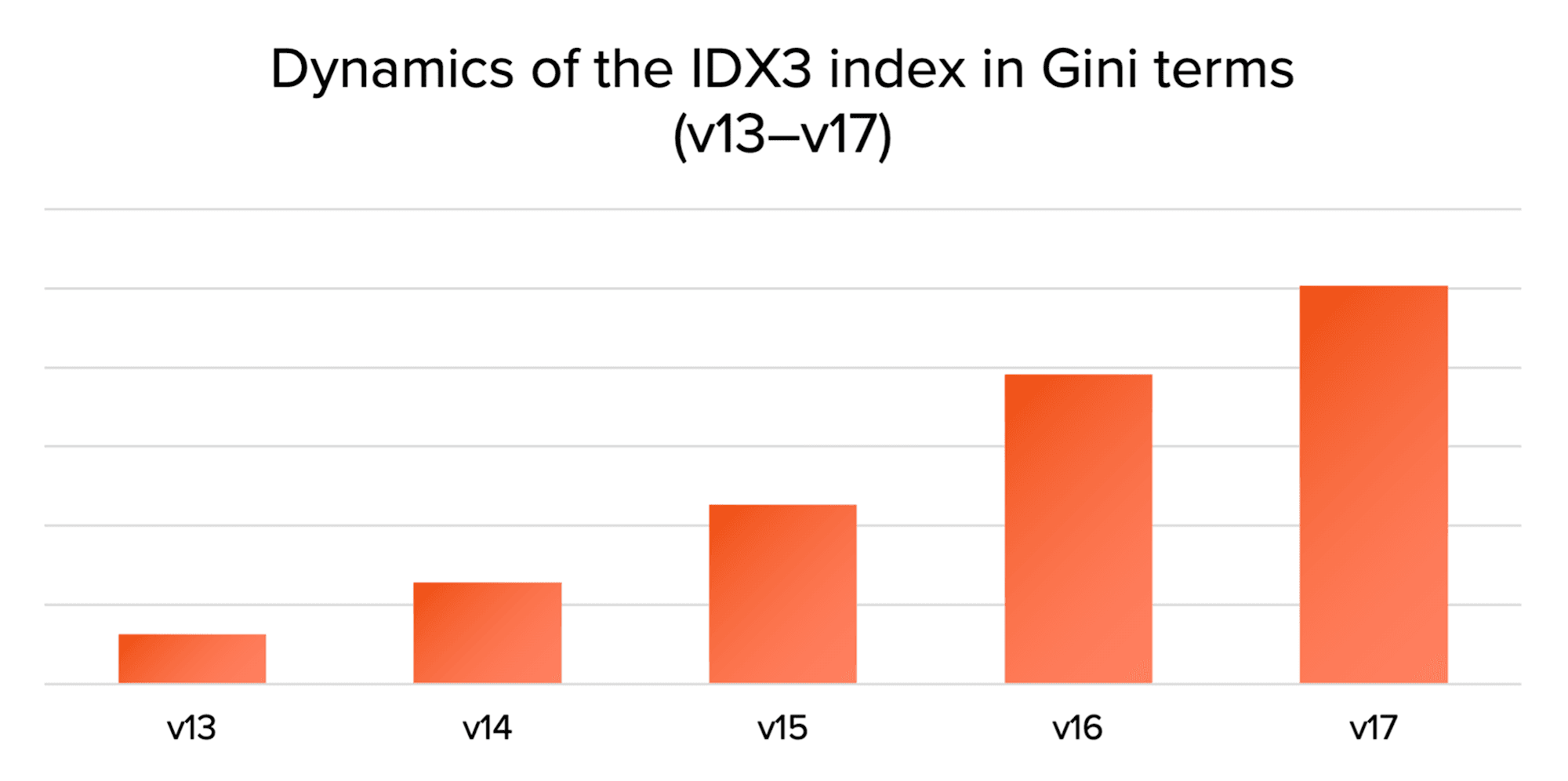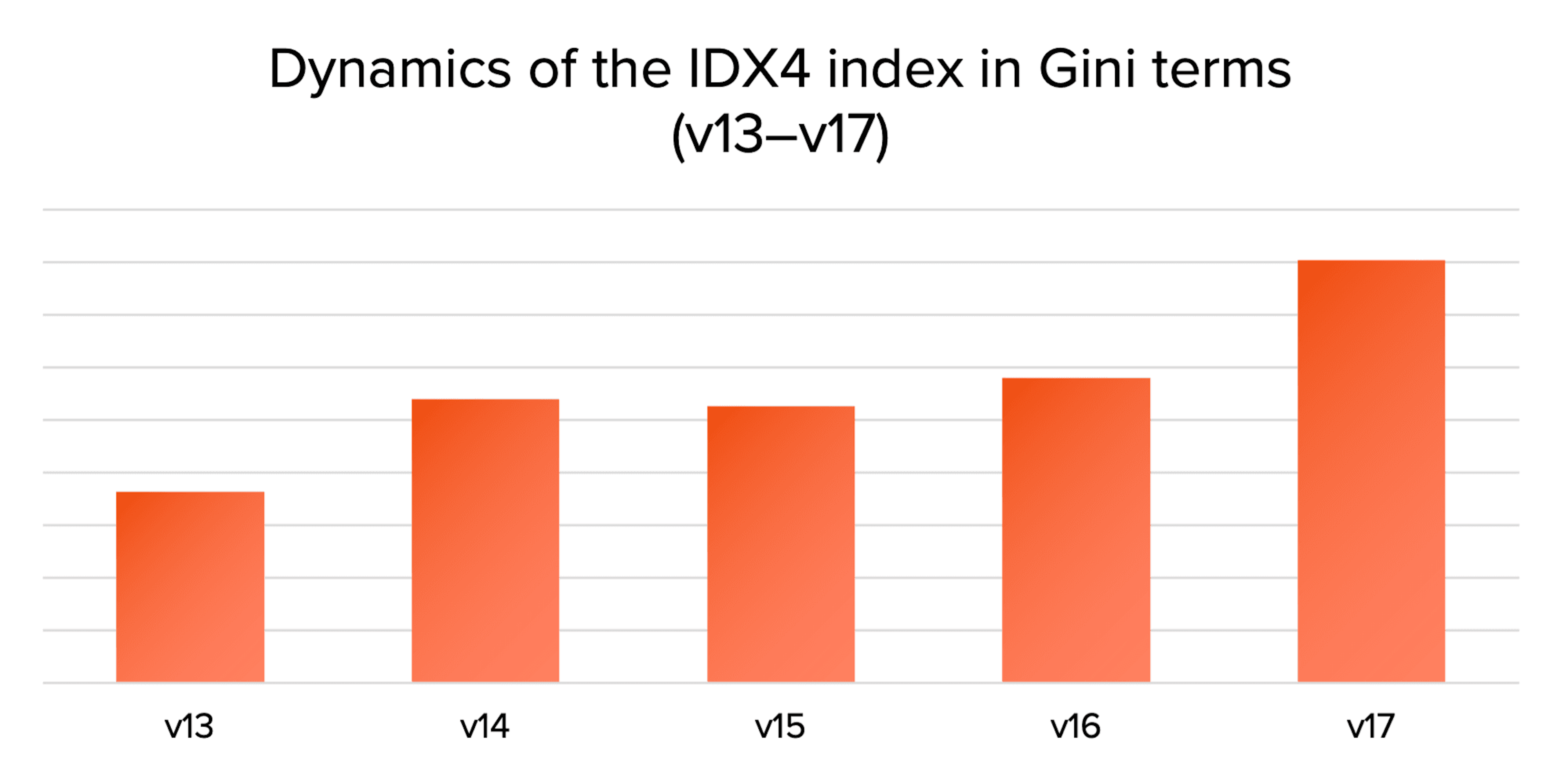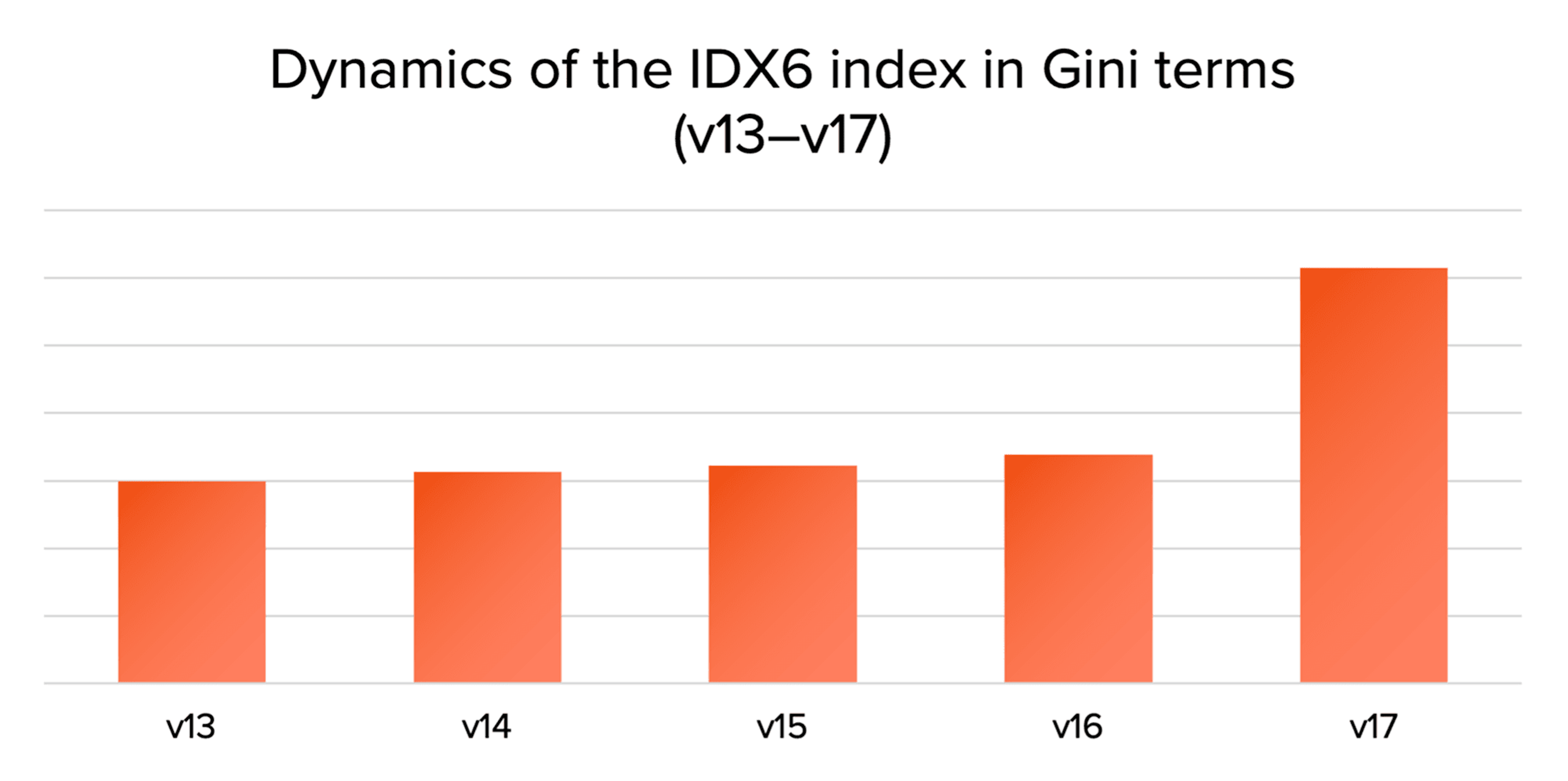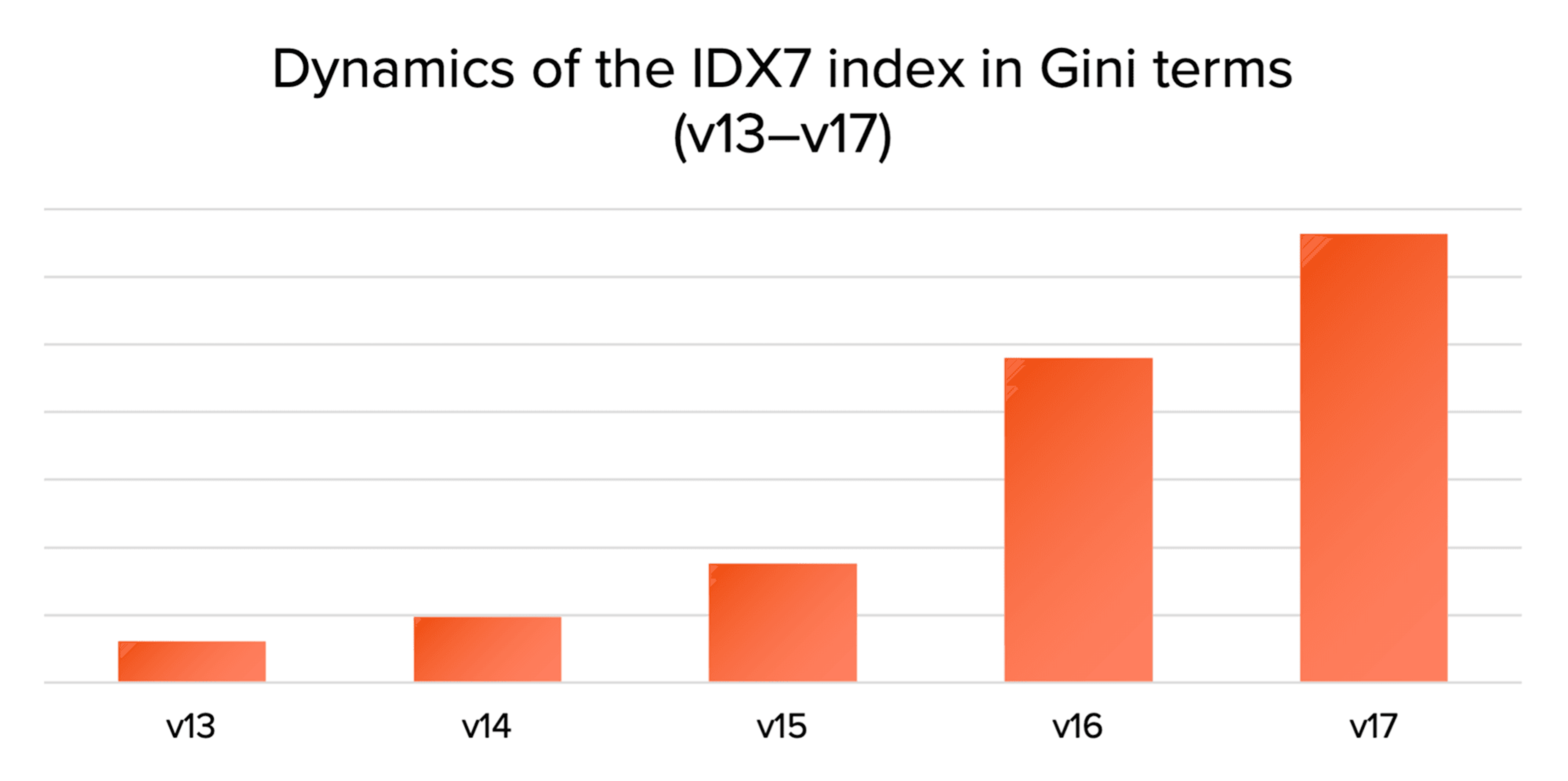API 17: Innovating and Elevating Protection for Our Clients


Dear friends and partners,
We are excited to announce one of the most significant releases of the year — the launch of API generation 17 for JuicyScore, JuicyID, and JuicyLightning. This release introduces a broad set of innovations in online fraud protection for application flows, personal accounts, and other digital assets. We have significantly expanded the response vector, refined indexes, improved infrastructure performance, and upgraded the client dashboard.
The 17th-generation JuicyScore API delivers enhanced tools to strengthen fraud detection, improve customer experience, and increase operational efficiency for online businesses.
Key improvements:
The new API introduces multiple advanced variables that enhance decision-making accuracy and risk detection. Several of them help analyze high-risk software configurations and privacy settings on user devices. The new variables expand the capabilities and improve the accuracy of fraud-prevention decision-making. In addition, several of them provide enhanced tools for analyzing high-risk software and device configurations on the applicant’s side. Here are some examples:
Is web permissions low privacy mode: the parameter reflects the level of risk associated with insufficient privacy restrictions in the web mode. This may indicate that the device has inadequate privacy settings, making the end user significantly more exposed to risk compared to others.
Is SDK high risk permissions mode: the parameter reflects the level of risk associated with insufficient privacy restriction settings on the device (applicable to native mobile SDKs).
Is Honeypot detected: a parameter indicating an attempt to reverse-engineer and/or tamper with the SDK code on the device.
Injection maximum risk level: a parameter that reflects the highest level of risk among the detected injections on the web page.
Crypto vector length: a parameter indicating the number of installed crypto applications (such as crypto wallets, exchanges, etc.) on the device.
Screen capture app detected: a parameter that reflects the risk of remote access through screen capture by a third-party application on the device.
The Generic Score is an ensemble of models built on IDX1–IDX10 aggregates and a set of auxiliary variables. The release of API 17 has increased the effectiveness of our technology by more than 20% in terms of Gini and by more than 40% in terms of Information Value (IV). Below you can see charts, reflecting the dynamics of our Key Indexes.

IDX2 is an aggregated variable that combines various user behavior markers and reflects the degree of risk growth depending on the user’s online activity. The JuicyScore vector includes several dozen markers related to user behavior, and the main task in designing this variable is to identify stable markers whose combination into a single aggregate enables the detection of high-risk segments associated with risky device behavior — regardless of the online company’s geographic footprint.

IDX3 s a combination of secondary anomaly markers related to the device. Each anomaly on its own may indicate a potential threat, while their simultaneous occurrence highlights a high-risk zone. High values of this index can be used as filters for automatic rejection.

IDX4 is a combination of network parameters and anomalies, where high values of this variable can be used for fraud detection and prevention.

This index reflects the quality of the internet connection during the session. The higher the index, the lower the risk. It is recommended to use this parameter for assessing operational and credit risk.

This index reflects the quality and usage of the installed software. The higher the index, the lower the risk. It is recommended to use this parameter for assessing operational and credit risk.
The significant innovations, new index versions, and variables listed above are only a small part of the overall improvements in API 17. We also plan to publish a series of materials demonstrating the effectiveness of our technologies and share best practices from different parts of the world.
We look forward to your feedback and are confident that these updates will help you respond to threats more efficiently and make better-informed decisions. Our team continues to enhance our technologies so that you always have access to the best tools for protecting and growing your business. Thank you for your trust and partnership!

Modern web applications use dynamic interfaces based on the DOM (Document Object Model).

Modern technologies are becoming more robust, and security measures more sophisticated. But there’s one vulnerability that can’t be patched — human trust.

API 16: +50 IV% and +25% Gini — Your Key to Business Safety
Get a live session with our specialist who will show how your business can detect fraud attempts in real time.
Learn how unique device fingerprints help you link returning users and separate real customers from fraudsters.
Get insights into the main fraud tactics targeting your market — and see how to block them.
Phone:+971 50 371 9151
Email:sales@juicyscore.ai
Our dedicated experts will reach out to you promptly